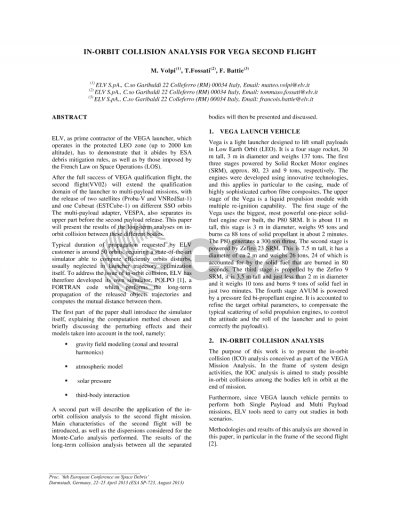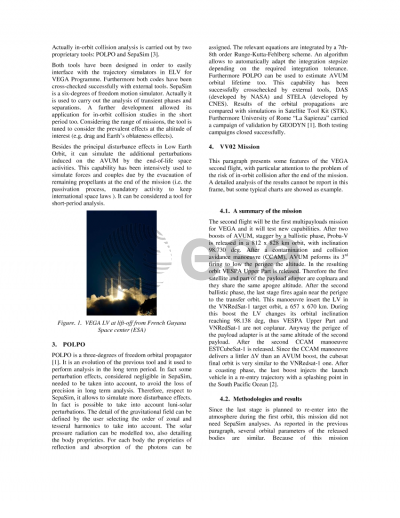Document details

Abstract
ELV, as prime contractor of the VEGA launcher, which operates in the protected LEO zone (up to 2000 km altitude), has to demonstrate that it abides by ESA debris mitigation rules, as well as by those imposed by the French Law on Space Operations (LOS). After the full success of VEGA qualification flight, the second flight(VV02) will extend the qualification domain of the launcher to multi-payload missions, with the release of two satellites (Proba-V and VNRedSat-1) and one Cubesat (ESTCube-1) on different SSO orbits The multi-payload adapter, VESPA, also separates its upper part before the second payload release. This paper will present the results of the long-term analyses on inorbit collision between these different bodies. Typical duration of propagation requested by ELV customer is around 50 orbits, requiring a state-of-the-art simulator able to compute efficiently orbits disturbs, usually neglected in launcher trajectory optimization itself. To address the issue of in-orbit collision, ELV has therefore developed its own simulator, POLPO [1], a FORTRAN code which performs the long-term propagation of the released objects trajectories and computes the mutual distance between them. The first part of the paper shall introduce the simulator itself, explaining the computation method chosen and briefly discussing the perturbing effects and their models taken into account in the tool, namely: - gravity field modeling (zonal and tesseral harmonics) - atmospheric model - solar pressure - third-body interaction A second part will describe the application of the in-orbit collision analysis to the second flight mission. Main characteristics of the second flight will be introduced, as well as the dispersions considered for the Monte-Carlo analysis performed. The results of the long-term collision analysis between all the separated bodies will then be presented and discussed.
Preview




